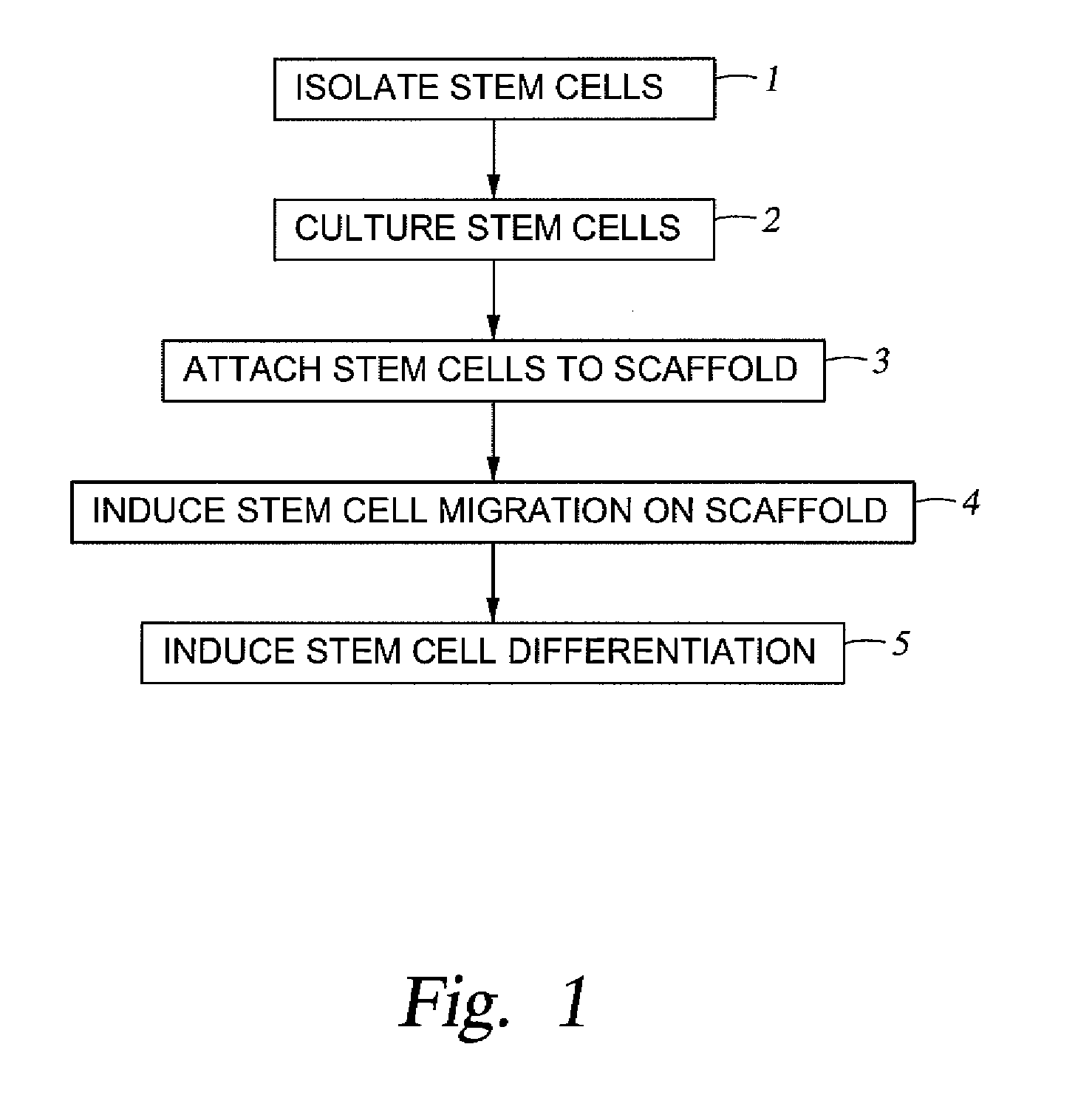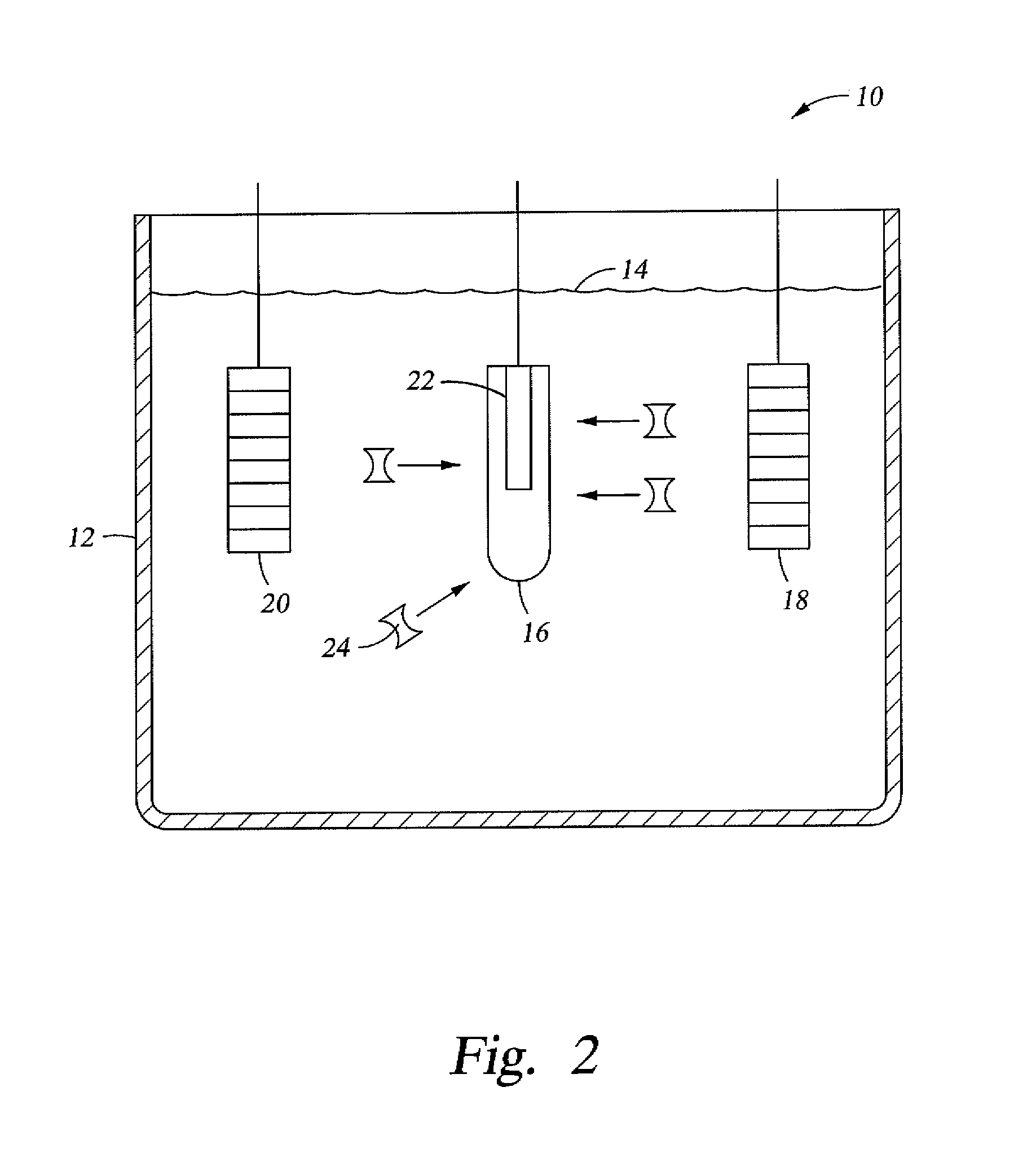Stem cell enhanced protein products and uses therof
a technology of stem cells and protein products, applied in the field of stem cell enhanced protein products, can solve the problems of not being able to meet the global demand for meat consumption, the method of producing meat from whole animals is highly inefficient, and the demand for meat and other sources of protein may no longer be sustained by traditional livestock production systems
- Summary
- Abstract
- Description
- Claims
- Application Information
AI Technical Summary
Problems solved by technology
Method used
Image
Examples
example 1
Isolation of Stem Cells from Organisms
[0058]Stem cells (and their niche aggregates) may be isolated from sectioning of the lower 30-90% of an organism with complete regenerative potential. The organism will be attached to the surface of a bioreactor via a foot plate in the lower section of the organism.
[0059]The isolated stem cells (and their niche aggregates) will be placed in a nutrient rich medium as described above, along with a 1 mM concentration of lithium chloride or lithium citrate to prevent development of a neural organizer or head structure.
[0060]The sectioned regions of the organism with the neural organizer and head structure will be eluted by a fluidic wave into a different bioreactor and bathed in nutrient rich medium as described above, but without any lithium ions. Thus, the sectioned regions will be able to regenerate into complete organisms. Electrical fields may also be used to induce proliferation, migration and differentiation. It is expected that the compositi...
example 2
Isolation of Stem Cells from Hyrda
[0063]The method described in Example 1 may be used to isolate stem cells from a Hydra species. By way of background, Hydra species have unlimited regenerative capacity. See, e.g., Martinez, D. E. (May 1998), “Mortality patterns suggest lack of senescence in hydra”, Experimental Gerontology 33 (3): 217-225; and Gierer A et al., (September 1972) “Regeneration of hydra from reaggregated cells”, Nat New Biol.; 239 (91):98-101. However, lithium ions, such as lithium chloride or lithium citrate, have been shown to hamper such regenerative capacity. See, e.g., Hassel, M. et al. (1993), “Pattern Formation in Hydra vulgaris is controlled by lithium-sensitive processes.” Developmental Biology 156: 362-371. In addition, Hydra species provide a good source of stems cells, such as epithelial, endothelial, and interstitial stem cells. Furthermore, and as described previously, it is envisioned that Hydra stem cells that are isolated along with their niche aggrega...
PUM
| Property | Measurement | Unit |
|---|---|---|
| temperature | aaaaa | aaaaa |
| magnetic field | aaaaa | aaaaa |
| electrical field | aaaaa | aaaaa |
Abstract
Description
Claims
Application Information
 Login to View More
Login to View More - R&D
- Intellectual Property
- Life Sciences
- Materials
- Tech Scout
- Unparalleled Data Quality
- Higher Quality Content
- 60% Fewer Hallucinations
Browse by: Latest US Patents, China's latest patents, Technical Efficacy Thesaurus, Application Domain, Technology Topic, Popular Technical Reports.
© 2025 PatSnap. All rights reserved.Legal|Privacy policy|Modern Slavery Act Transparency Statement|Sitemap|About US| Contact US: help@patsnap.com



